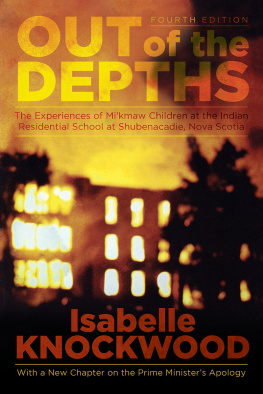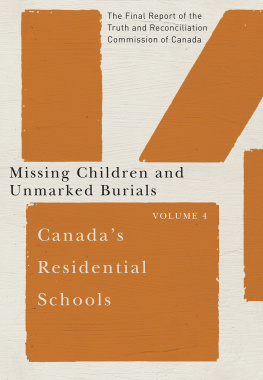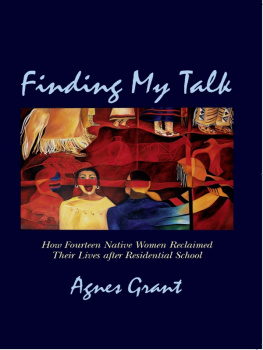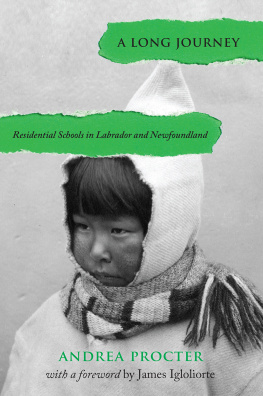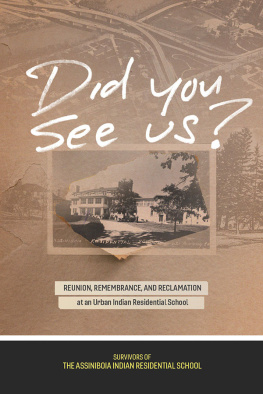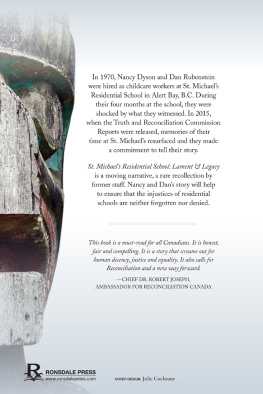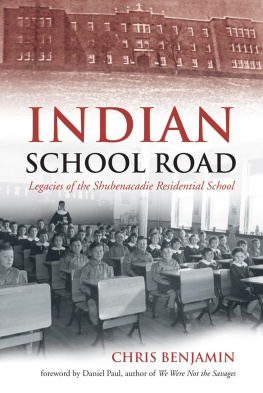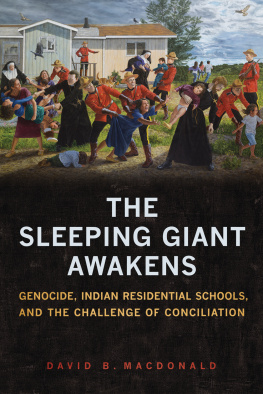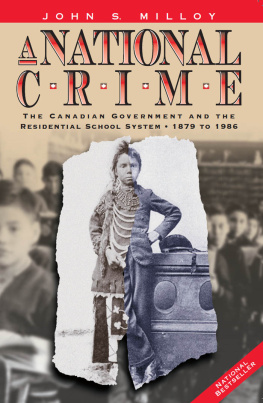OUT of the DEPTHS
FOURTH EDITION
OUT of the DEPTHS
FOURTH EDITION
The Experiences of Mikmaw Children at the Indian Residential School at Shubenacadie, Nova Scotia
With a New Chapter on the Prime Ministers Apology
Isabelle KNOCKWOOD
with Gillian Thomas
Fernwood Publishing
Halifax & Winnipeg
Copyright 2015 Isabelle Knockwood
First Edition, November 1992; Second Edition, December 1992, Third Edition July 2001.
All rights reserved. Except for the quotation of short passages for the purposes of criticism and review, no part of this publication may be reproduced in any form without prior permission of the publisher.
This book was published with the financial assistance of the Shubenacadie Band Council, the Secretary of State for Multiculturalism and Citizenship, and the Nova Scotia Department of Tourism and Culture.
All rights reserved. No part of this book may be reproduced or transmitted in any form by any means without permission in writing from the publisher, except by a reviewer, who may quote brief passages in a review.
The decorative motif at the beginning of each chapter is adapted
from traditional Mikmaw porcupine quill designs.
Cover photograph of the burning school: Russell Robinson
Cover design: Brenda Conroy & John van der Woude
eBook development: WildElement.ca
Printed and bound in Canada
Published by Fernwood Publishing
32 Oceanvista Lane, Black Point, Nova Scotia, B0J 1B0
and 748 Broadway Avenue, Winnipeg, Manitoba, R3G 0X3
www.fernwoodpublishing.ca
Fernwood Publishing Company Limited gratefully acknowledges the financial support of the Government of Canada through the Canada Book Fund and the Canada Council for the Arts, the Nova Scotia Department of Communities, Culture and Heritage, the Manitoba Department of Culture, Heritage and Tourism under the Manitoba Publishers Marketing Assistance Program and the Province of Manitoba, through the Book Publishing Tax Credit, for our publishing program.

Library and Archives Canada Cataloguing in Publication
Knockwood, Isabelle, 1931-, author
Out of the depths : the experiences of Mikmaw children at the
Indian Residential School at Shubenacadie, Nova Scotia / Isabelle
Knockwood. -- Fourth edition.
Issued in print and electronic formats.
ISBN 978-1-55266-729-3 (pbk.).--ISBN 978-1-55266-756-9 (epub)
1. Micmac Indians--Education--History--20th century. 2. Indians
of North America--Nova Scotia--Shubenacadie--Education--History--20
century. 3. Micmac Indians--Residential schools. 4. Indians of North
America--Nova Scotia--Shubenacadie--Residential schools.
5. Knockwood, Isabelle, 1931-. 6. Shubenacadie Indian Residential School.
I. Title.
E99.M6K65 2015 371.82997071635 C2015-900673-2
C2015-900674-0
CONTENTS
Preface to the Fourth Edition
The Truth and Reconciliation Commission
The Process of the Book
Discussion between Isabelle and Gillian

Isabelles parents, Deodis and John Knockwood, pose on the right with their youngest son, Noel. On the left are Isabelle and Stephen Francis from the Pictou Landing Reserve. Three of them are dressed in Mikmaw regalia, presumably because they were attending a ceremony. This photo was taken about 1936.
This book is dedicated to all former students of the Indian Residential School in Shubenacadie, Nova Scotia
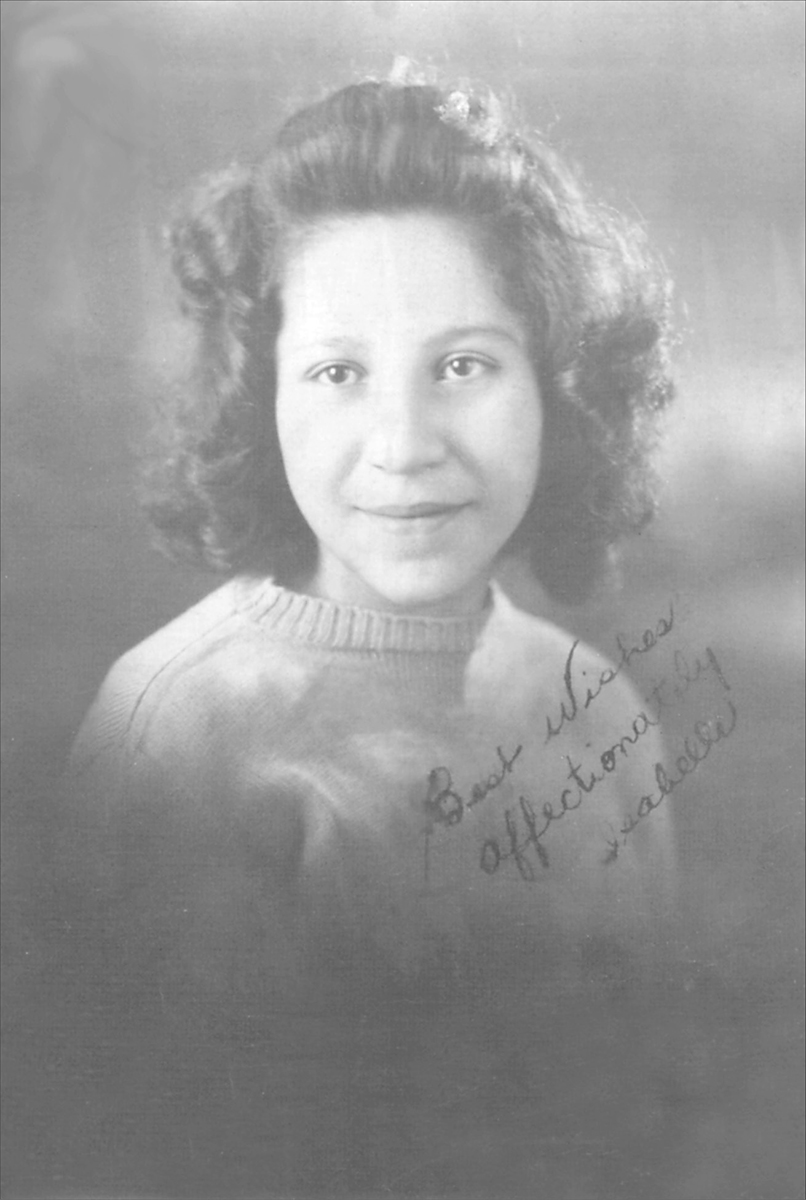
Isabelle Knockwood, age 16.
Kwe
I am holding the Talking Stick. I have been talking about the Indian Residential School in Shubenacadie for many years, and I still dont understand why the hurt and shame of seeing and hearing the cries of abused Mikmaw children, many of them orphans, does not go away or heal. I hope that the act of writing it down will help me and others to come up with some answers.
Our Mikmaw ancestors used the Talking Stick to guarantee that everyone who wanted to speak would have a chance to be heard and that they would be allowed to take as long as they needed to say what was on their minds without fear of being interrupted with questions, criticisms, lectures or scoldings, or even of being presented with solutions to their problems. An ordinary stick of any kind or size is used. Those seated in the Circle commit themselves to staying to the end, not getting up to leave or walk about because this behaviour is considered an interruption. Anyone who leaves the Circle can return and sit with the latecomers whose only role is to observe and listen. This is because they have missed some information and therefore cannot offer advice or make an informed decision. The person who has a problem or an issue to discuss holds the Talking Stick and relates everything pertaining to it especially everything they have done to solve it. After they are through, they pass the stick to the person on their left, following the suns direction. The next person, Nekm , states everything they know about the problem without repeating anything that was already said. They tell what they or others have done in similar situations. They neither agree nor disagree with what others have said.
The Talking Stick goes around until it returns to the person with the problem or issue, who then acknowledges everyone present and what they have said. Sometimes the solution or answer comes as soon as everyone has spoken. Maybe the person has already thought it out, or it may come as an inspiration on the long trek back home. Or else, it could appear in the form of a vision or a dream. Dreams were a very important part of problem-solving with the First People of the land. Maybe a Spirit Guide will come, or some new information be brought to light, or a series of events will fall into place. The Talking Stick is an instrument of free speech that gives people who were once silenced an opportunity to say what is on their minds in the language they choose.
PREFACE TO THIRD EDITION
The Code of Silence
The long process of writing what became the first edition of Out of the Depths forced me to overcome what I call the code of silence. It has its beginnings in the time we were children in the Residential School.
M y sister Rosie remembers one day when we were both quite small and were all in the recreation hall. Wikew came in and singled out several girls. She pointed them out You, and you and you. Come with me. She lined up about twelve little girls, then went to the medicine cabinet and took out a pair of big dressmaking shears. She made them follow her into the bathroom the room where all the sinks were and into the back section where the tubs and showers were. They all had to stand around her in a circle. She said, I dont like being lied to and heres what Im going to do to anyone who lies to me. Pointing to Jean the smallest girl in the group she said, Come here Jean. Im going to use you as an example. Im not going to hurt you. I want to show the others whats going to happen to them if they lie to me. She made her stick out her tongue. Dont worry, she said, Im not going to hurt you. Then she wrapped a piece of toweling around the little girls tongue. Taking the scissors she said, Now Im going to cut off your tongue. She went snip, snip without actually cutting the toweling, then said, Thats what Im going to do if anybody lies to me. Then she sent them back to the recreation hall. They all filed back with their heads down, too afraid to look at each other. Wikew put the big scissors back into the medicine cabinet. Rosie still recalls being bewildered by this incident as a little girl, most of all because at the time she had no idea what a lie was.

